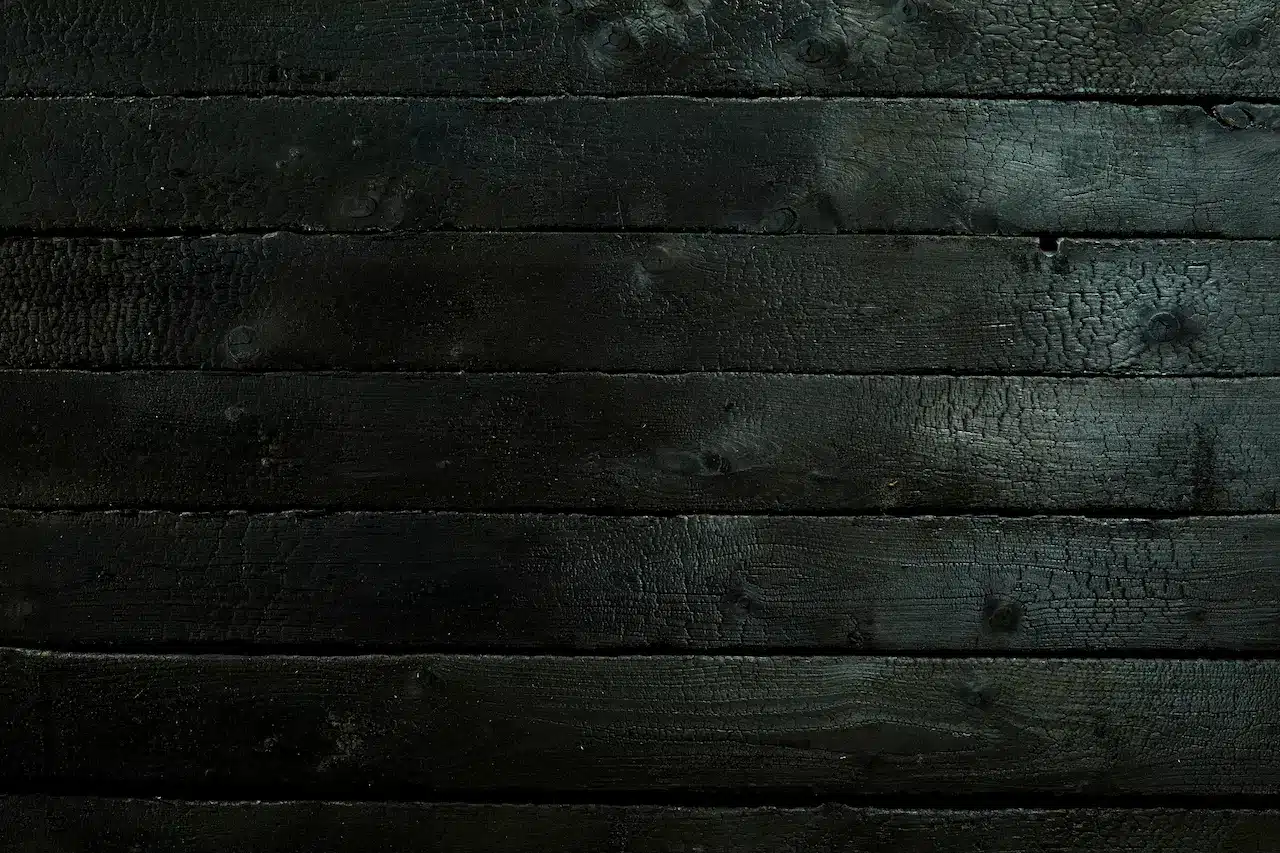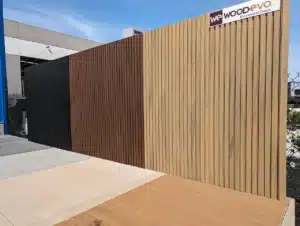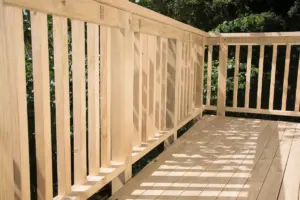Charring of Timber: Understanding the Protective Benefits and Aesthetic Appeal
Timber charring is a preservation and finishing method that has garnered significant attention for its durability and aesthetic appeal. This technique, which has its origins in traditional Japanese practices, involves the surface combustion of wood to varying degrees of depth and intensity. The controlled application of flames to timber not only alters its visual characteristics but also enhances the natural resiliency of wood, making it resistant to many environmental and biological threats.
The process induces physical and chemical changes within the wood, such as the formation of a carbon layer on the surface that acts as a barrier against moisture, insects, and fungi. Hardwoods are typically charred at a rate of about 0.5 mm/min, while softwoods may char at a slightly faster rate of approximately 0.65 mm/min. Beyond the charring itself, additional measures such as reducing the dimensions of the timber by several millimetres can be employed to accommodate the impact of heat beneath the charred surface, which provides further safeguarding against external elements.
In construction, the aesthetic qualities of charred timber are highly regarded, rendering a unique, textured look that can range from subtly greyed to deeply blackened. This finishing technique not only provides an attractive facade but also serves as a functional measure to extend the life and performance of timber structures. Despite its simplicity, the effectiveness of charring as a treatment method underscores its continued relevance in contemporary timber applications.
Table of Contents
Toggle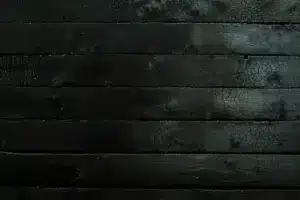
Charring Process
Charring timber involves subjecting wood surfaces to high heat, resulting in a carbonised layer that provides enhanced durability and a distinct aesthetic.
Materials and Tools
To commence the charring of timber, one needs:
- Wood Surfaces: Timber planks suitable for high heat exposure, commonly softwoods like cedar.
- Hand-Held Burner: A propane torch or similar device capable of evenly applying intense heat.
- Steel Brush: Used post charring to remove loose char and emphasise the wood grain.
Surface Ignition Methods
The objective when igniting the timber’s surface is consistent charring, requiring a steady hand and a systematic technique:
- Uniform application: The hand-held burner should be moved steadily over the timber surface at a consistent speed and distance to avoid uneven charring.
- Grain enhancement: After cooling, a steel brush can be used over the wood to clean and emphasise the grain, giving the final product its distinguished appearance.
Benefits of Charring
Charring timber provides several protective advantages which are beneficial for both longevity and aesthetics.
Fire Resistance
The process of charring creates a carbonised layer on the surface of timber which acts as an insulating barrier. This barrier contributes to the material’s fire-resistant properties, as it helps to protect the unburnt interior from further combustion. In events where timbers are exposed to flame, the char layer can effectively slow down the rate at which the fire spreads.
Insect Resistance
Timber that has been subjected to charring is less inviting to insects. The charring process alters the chemical composition of the wood’s surface, making it less palatable to many wood-boring pests. By creating an environment that is inhospitable to insects, charred timber effectively gains a layer of insect resistance, promoting the timber’s integrity and durability.
Weathering Resistance
Charred timber exhibits a strong resistance to weathering. The altered surface from charring can withstand extreme conditions including rain, wind, and UV radiation from the sun. The resilience of charred wood to such environmental factors greatly reduces the rate of decay and degradation, extending the lifespan of timber used in outdoor applications.
Post-Charring Treatments
After the process of charring, timber requires specific aftercare to ensure its longevity and to enhance its protective properties. This involves cleaning the wood and applying protective finishes.
Cleaning Charred Wood
Once the timber has been charred, it often holds a layer of loose charcoal on its surface. This should be brushed away using a stiff-bristled brush to remove any ash or debris. Care should be taken to remove all residual char while not damaging the wood’s surface.
Application of Finishes
After cleaning, the application of a finish can preserve the charred appearance and protect the timber from weathering. Oils, such as Tung or Linseed, or varnishes are commonly applied. Apply the finish with a clean brush or rag, working with the wood’s grain. Multiple coats may be applied for additional protection, allowing ample drying time between each coat.
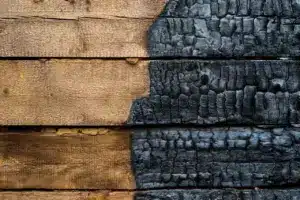
Historical Context
Charring of timber is an ancient technique to enhance its durability and aesthetic appeal. This method has been applied across different cultures with various practices and materials.
Traditional Japanese Yakisugi
In Japan, Yakisugi (焼杉), commonly referred to as Shō Sugi Ban, is a revered method of wood preservation. This technique uses controlled burning to char the surface of Sugi (Japanese cedar) planks. The resulting char layer acts as a protective coating that is resistant to fire, rot, and pests. Yakisugi also gives the wood a distinct blackened appearance that can vary in colour and texture depending on the intensity of the burn and other factors during the treatment process. The practice, rooted in Japanese tradition, is still employed today not just in Japan but also internationally, appreciated for its appearance as well as the protection it offers to timber.
Safety and Maintenance
Safety and proper upkeep are central to maximising the lifespan of charred timber and ensuring it continues to perform its protective function.
Handling Charred Timber Safely
Persons involved with charred timber should wear protective gloves to avoid splinters or irritation from the charred surface. They should also have eye protection if sanding or cutting the material, as particulate matter can be harmful. Work areas should be well-ventilated especially if any sealants or treatments are applied to the charred wood.
Long-Term Upkeep
Periodic inspections of charred timber for signs of wear or damage, such as splintering or soft spots, can help in identifying areas that might need treatment or replacement. While charred timber facades require little maintenance, they should be cleaned with a soft brush or low-pressure water spray to remove dirt and debris. If a sealant was originally applied, reapplication may be necessary every few years to preserve the wood’s appearance and durability.

